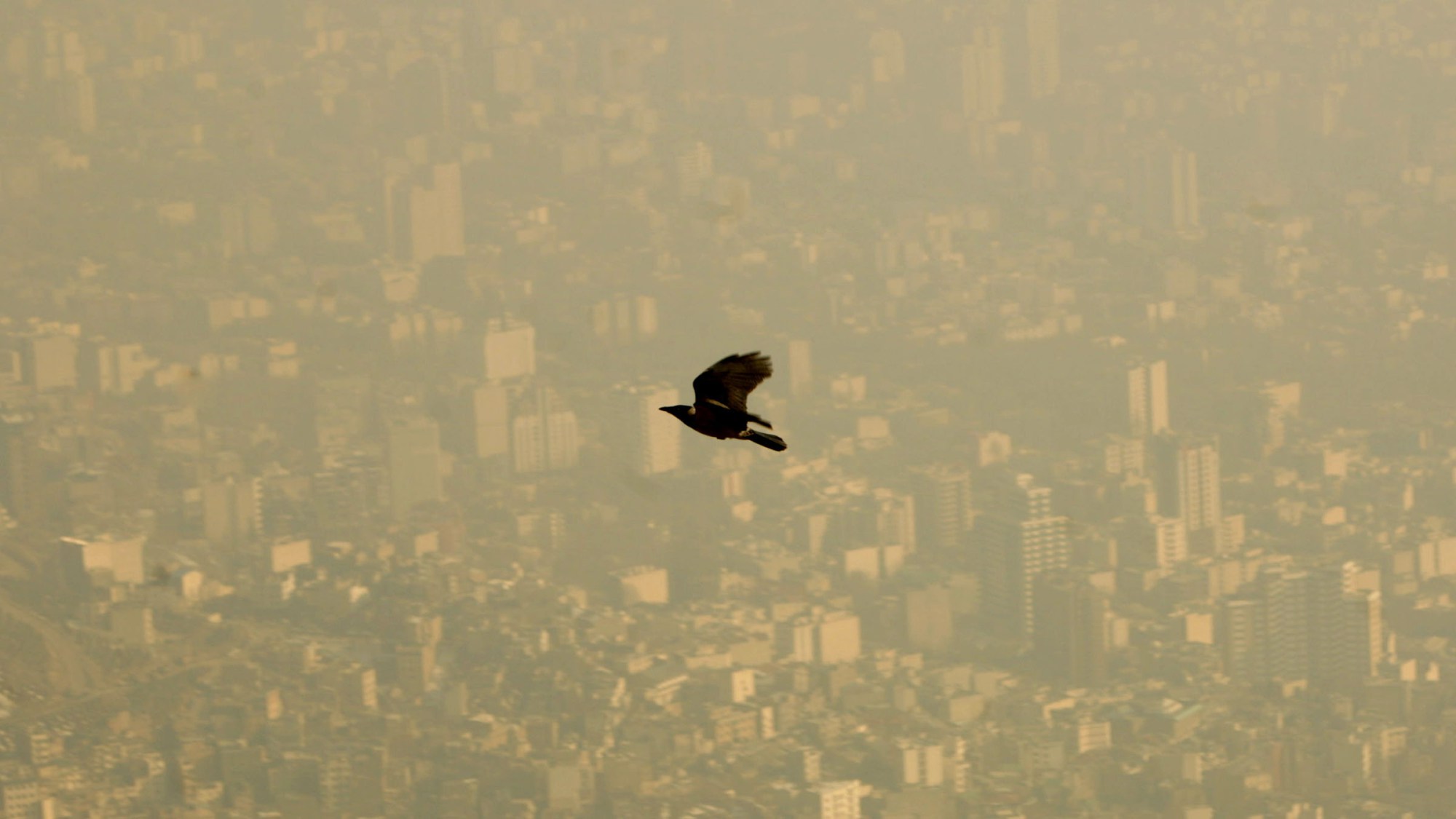[caption id="attachment_145399" align="alignright" width="154"]
Air pollution covering the capital city of Iran, Tehran. Photo Credit: Morteza Nikoubazl[/caption]
Waking up to thick, grey smog covering the city and commuting behind facemasks has sadly become a daily routine in Tehran.
Eyes sting. They itch. Sometimes even breathing burns your throat.
But the problem of air pollution in Iran goes well beyond its capital city.
According to the World Health Organization, in 2013, among the world’s top ten most polluted cities, four could be found in Iran.
Among the reasons contributing to poor air quality are vehicle emissions, factory operations and industrial effluents.
On 7 January, the Iranian Academy of Medical Sciences organized the 24th Meeting of the Health and International Development Group. Speakers included Dr. Alireza Marandi, former Minister of Health and currently President of the Academy, and Mr. Gary Lewis, UN Resident Coordinator and UNDP Resident Representative in the Islamic Republic of Iran.
Topic of discussion: air pollution.
In his opening remarks Mr. Marandi noted: “Meetings like this – plus the suggestions which come out of them – give us hope. I look forward to the day when we turn these suggestions to laws and regulations which actually get implemented. A day when we can finally breathe.”
Speaking at the meeting Mr. Lewis said: “Air pollution has now emerged as a silent killer with an impact which is four times greater than that of HIV/AIDS. Most people don’t even know about this. According to recent report by WHO, air pollution was the cause of 7 million premature deaths in 2012.”
“The news is not all bad news, however”, Mr. Lewis continued. “We possess the technical knowledge, the technology and the management mechanisms to monitor and reduce these emissions rapidly and effectively. Many countries have already stepped up to this with remarkable results,” said Mr. Lewis.

On 7 January, the Iranian Academy of Medical Sciences organized the 24th Meeting of the Health and International Development Group He added: “The United Nations takes note of the ongoing effort of the Islamic Republic of Iran to contribute to global efforts to mitigate climate change and ensure adaptation to its consequences. We take note of measures taken to combat urban air pollution. We however believe that a strong integrated approach is needed if the urban air pollution is to be addressed quickly and effectively and stand ready to join hands in this regard. This must be backed up by strong support at the political level. And it must also be supported by strong public demand and public awareness.”
Four presentations were then shared with the audience. Jointly, the Head of UNDP’s Health Cluster, Mr. Saied Ferdowsi and the Head of UNDP’s Environment Cluster, Mr. Mehdi Kamyab gave a presentation entitled Global Overview of Health and Air Pollution.
During his presentation Mr. Ferdowsi said: “Air pollution is an important determinant of health. A wide range of adverse effects of ambient air pollution on health has been well documented by studies conducted in various parts of the world. There is significant inequality in exposure to air pollution and related health risks: air pollution combines with other aspects of the social and physical environment to create a disproportionate disease burden in less affluent parts of society.”
He went on to add: “Exposure to air pollutants is largely beyond the control of individuals and requires action by public authorities at the national, regional and international levels. A multi-sectoral approach, engaging such relevant sectors as transport, housing, energy production and industry, is needed to develop and effectively implement long-term policies that reduce the risks of air pollution to health.”
Mr. Kamyab focused on the transport sector and in this regards he said: “The transport sector has a total share of global CO2emission of about 23 to 24% and road transport is responsible for the lion’s share of this emission at about 17 to 18%. In Iran however, the total share of CO2 emission from road transport stands at 23% which is higher than the global average” he said.
Mr. Kamyab added: “in 2012, fuel requirements for Iran’s transportation sector was equivalent to 821,000 barrels of crude oil per day. This figure provides a grim picture when judged against Iran’s current diminished oil production capacity of around 2 million barrels per day.”
The Head of UNDP’s Environment Cluster then proposed the market transformation of Iran’s Light Duty Vehicle (LDV) fleet through introduction of hybrid vehicles supported by a package of policy measures for mass adoption of hybrids. Hybrid vehicles are a cost-effective and energy efficient replacement to Iran’s aging LDV fleet and a platform to achieve significant reductions in fuel consumption and therefore CO2 emission of the transportation sector.
Another meeting on the same topic is set to take place next month at the Iranian Academy of Medical Sciences.
By United Nations In Iran
The Iran Project is not responsible for the content of quoted articles.

 QR code
QR code